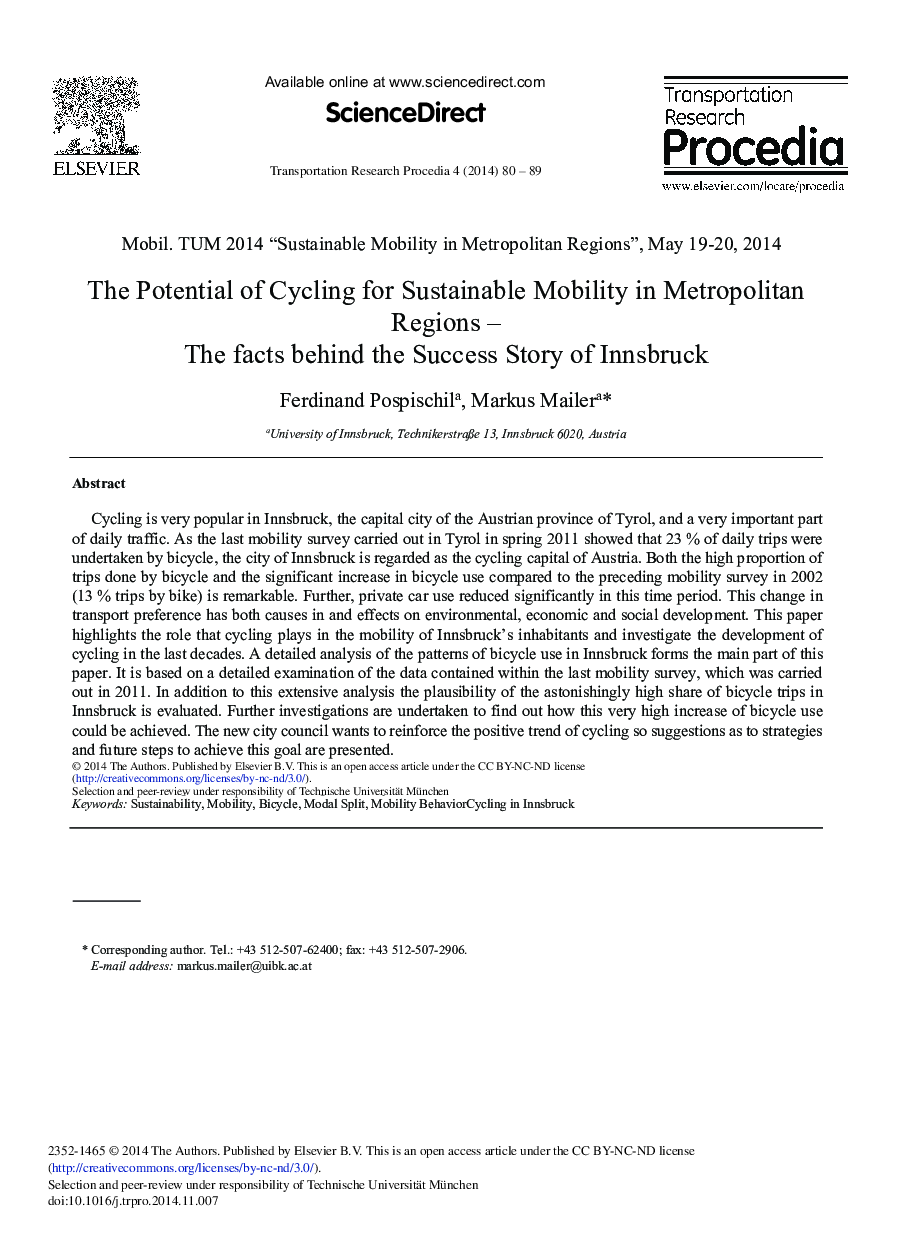| کد مقاله | کد نشریه | سال انتشار | مقاله انگلیسی | نسخه تمام متن |
|---|---|---|---|---|
| 1106316 | 1488291 | 2014 | 10 صفحه PDF | دانلود رایگان |

Cycling is very popular in Innsbruck, the capital city of the Austrian province of Tyrol, and a very important part of daily traffic. As the last mobility survey carried out in Tyrol in spring 2011 showed that 23% of daily trips were undertaken by bicycle, the city of Innsbruck is regarded as the cycling capital of Austria. Both the high proportion of trips done by bicycle and the significant increase in bicycle use compared to the preceding mobility survey in 2002 (13% trips by bike) is remarkable. Further, private car use reduced significantly in this time period. This change in transport preference has both causes in and effects on environmental, economic and social development. This paper highlights the role that cycling plays in the mobility of Innsbruck's inhabitants and investigate the development of cycling in the last decades. A detailed analysis of the patterns of bicycle use in Innsbruck forms the main part of this paper. It is based on a detailed examination of the data contained within the last mobility survey, which was carried out in 2011. In addition to this extensive analysis the plausibility of the astonishingly high share of bicycle trips in Innsbruck is evaluated. Further investigations are undertaken to find out how this very high increase of bicycle use could be achieved. The new city council wants to reinforce the positive trend of cycling so suggestions as to strategies and future steps to achieve this goal are presented.
Journal: Transportation Research Procedia - Volume 4, 2014, Pages 80-89